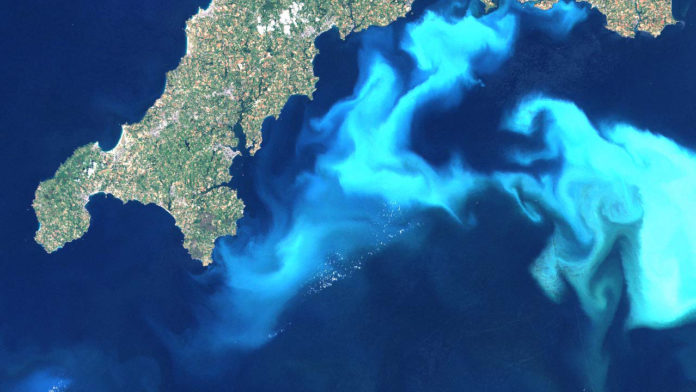For the first time, researchers have found that bacteria can press a molecular self-destruct button in single-celled algae.
This death mechanism could have implications for antibiotic discovery.
Apoptosis, or programmed cell death, is a highly controlled process that allows the immune system to clean up dead cells before their contents can spill out and damage neighbouring cells. It’s incredibly important in complex multicellular organisms; every day the average adult human will lose 50-70 billion cells daily through apoptosis. It is also critical during development, such as in the programmed death of cells that die between what becomes our fingers and toes.
A similar process has also been observed in Emiliania huxleyi: single-celled algae that form huge blooms that can be seen from outer space. After several weeks, they quickly die out and sink into the deep ocean.
This rapid decline is usually attributed to infection by viruses and other pathogens that cause the algae to die through lysis, where the membranes of infected algae break open.
Rebecca Case, assistant professor of biological sciences at the University of Alberta, found that apoptosis-like programmed cell death (AL-PCD) can also be triggered by bacteria, representing a second distinct mechanism for their death. The study was published in Scientific Reports.
Phaeobacter inhibens is a species of bacteria that is closely associated with E. huxleyi blooms. The bacteria release several signaling molecules that could be algaecidal, but exactly how they affect E. huxleyi was unknown.
So Case isolated and grew the two species together in a dish. Compared to cultures of the algae alone, the co-cultured algae showed all the hallmarks of AL-PCD. Case observed nuclear degradation, increased concentrations of destructive reactive oxygen species, activation of caspase-like molecules, and loss of autofluorescence. AL-PCD could also be interrupted with pan-caspase inhibitors.
The study also looked at the benefits for P. inhibens. After triggering AL-PCD in E. huxleyi, their concentration increased as they entered a second growth phase. This boost was not observed when the bacteria were grown alone, or when AL-PCD was inhibited.
Notably, close-proximity interactions like these usually only require small concentrations of the molecules that trigger cell death because they are highly potent and specific to the intended host. Studying these molecules could unlock the discovery of stronger and more selective antibiotics.
In medicine, many drugs are inspired by nature. Understanding more about the surprising biology of the organisms around us opens up more options to tap into.








































